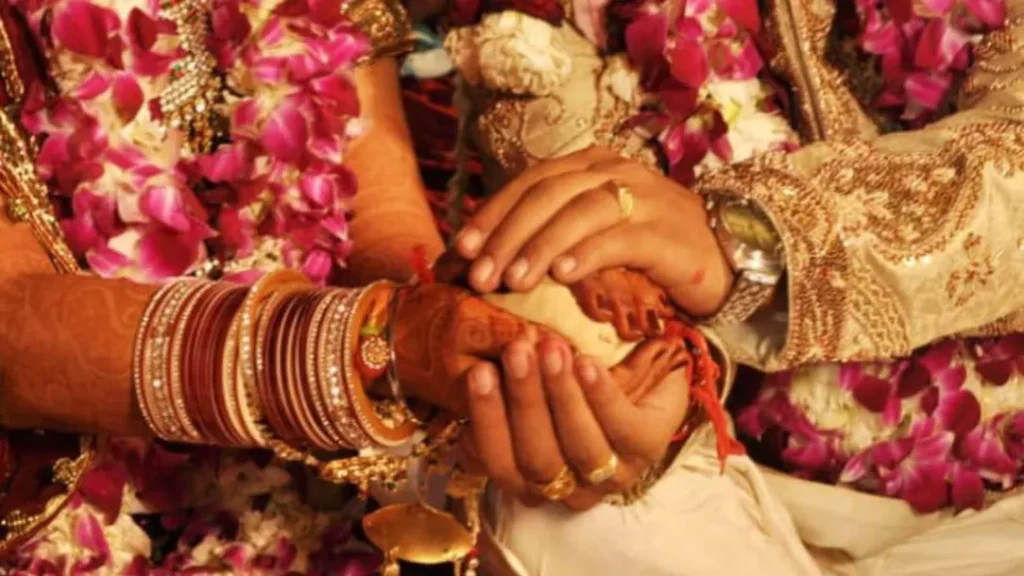Context:
Recently, the Himachal Pradesh Assembly passed a bill to raise the marriage age for women from 18 to 21 years.
More on the News

- This landmark legislation, the Prohibition of Child Marriage (Himachal Pradesh Amendment Bill 2024), was approved by voice vote on the first day of the monsoon session.
- The bill, introduced by Health Minister of Himachal Pradesh, aims to promote gender equality and educational opportunities for women.
- If approved by the Governor, Himachal Pradesh will be among the first states in India to enact this significant change in marriage laws.
- The Prohibition of Child Marriage (Amendment) Bill, 2021, introduced in the Lok Sabha in December 2021 and lapsed due to the dissolution of the 17th Lok Sabha.
Prohibition of Child Marriage (Himachal Pradesh Amendment Bill 2024)
- Key Provisions: The bill seeks to amend the Child Marriage Act 2006 and related state laws to increase the minimum marriage age for women to 21 years. This aligns with the age requirement for men, promoting gender parity in marriage laws.
- Rationale: Early marriage hinders girls’ education and life progression. The bill aims to address these concerns by providing women with more time for personal and professional development before marriage.
- Legislative Process: Initially introduced during the February budget session, the bill will now be sent to Governor for assent.
Child Marriage Status in India:
- One in every three child brides in the world lives in India.
- Out of the 650 million child brides in the world, 223 million are in India alone, of these 223 million child brides, 102 million were married before the age of 15.
- India ranks fourth among the eight South Asian countries in terms of child marriage prevalence.
- Over half of Indian child brides live in five states: Uttar Pradesh, Bihar, West Bengal, Maharashtra and Madhya Pradesh.
- Uttar Pradesh is home to the largest population of child brides, with 36 million.
- More than 40 % of young women were married in childhood in Bihar (43 %) and West Bengal (42 %) compared to 2% in Lakshadweep.
Benefits of Raising the Age of Marriage for Women:
- Educational Opportunities: Delaying marriage allows young women to pursue higher education and develop crucial life skills, enhancing their economic independence and decision-making abilities.
- Health Improvements: Later marriages can lead to delayed pregnancies, reducing health risks associated with early motherhood and potentially improving maternal and child health outcomes.
- Economic Empowerment: Additional years before marriage give women more time to establish careers, potentially increasing their financial stability and contribution to household income.
- Achieve Gender Equality: Such reforms will help us achieve Sustainable Development Goal (SDG) 5, which aims to achieve gender equality and empower women and girls, by increasing the age of marriage for women.
Concerns:
- Cultural Resistance: Some communities may resist this change, viewing it as interference with traditional practices and cultural norms surrounding marriage.
- Implementation Challenges: Enforcing the new age limit may prove difficult, especially in rural areas where child marriages are more prevalent and deeply rooted in social customs.
- Potential Increase in Informal Unions: Some concerns raising the legal age might lead to an increase in informal or unregistered marriages among those wishing to marry earlier.
Way Forward
- To support the Prohibition of Child Marriage (Himachal Pradesh Amendment Bill 2024), it’s crucial to promote community engagement through art and media, and implement peer education and mentorship programs.
- Combining these with economic empowerment initiatives will help women leverage the additional years for education and career growth, ensuring the bill’s goals of gender equality and improved health outcomes are met effectively.

